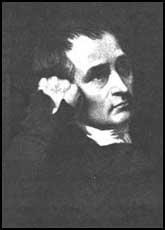Samuel Crompton

Samuel Crompton, the son of a small farmer, was born in Firwood, Bolton, in 1753. Later he moved to Darwen, a small village 9 miles north of Bolton. After working at various jobs he set out to invent a spinning machine that would improve on the Spinning Jenny that had been produced by James Hargreaves.
In 1775 Crompton produced his spinning mule, so called because it was a hybrid that combined features of two earlier inventions, the Spinning Jenny and the Water Frame. The mule produced a strong, fine and soft yarn which could be used in all kinds of textiles, but was particularly suited to the production of muslins.
Crompton was too poor to apply for a patent and so he sold the rights to a Bolton manufacturer. The first mules were hand-operated and could be used at home. By the 1790s larger versions were built with as many as 400 spindles. David Dale was quick to see the potential of the mule and purchased several for his factory in New Lanark, Scotland.
The Spinning Mule could also be driven by the new steam engines that were being produced by James Watt and Matthew Boulton. A large number of factory owners purchased Crompton's mules, but because he had sold the rights for his machine, he made no money from these sales.
Robert Peel was one of those who felt sorry for Crompton and in 1812 arranged for the House of Commons to grant him a reward of £5000. Crompton used the money to invest in a cotton factory but the venture ended in failure.
Samuel Crompton died in poverty in Bolton in 1827.
